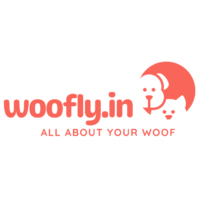For pet parents, a little pet hair on your clothes is a badge of honor. But when your home and wardrobe are constantly covered in fur, it can become a real nuisance. Fortunately, while shedding is common among all breeds, it’s also manageable with the right strategies.

Why Do Puppies Shed?
Shedding in puppies varies by breed, but most start losing their baby fur around 4-6 months of age. Initially, puppies have a soft, single-layer coat, which is gradually replaced by thicker, more resilient fur over the next couple of years. Breeds with double coats will develop two layers of fur after shedding their initial puppy coat.
Once the puppy fur is gone, the new coat will have a different texture and color, and the unique puppy scent will disappear.
Shedding Cycles
Dogs don’t shed continuously; their fur goes through a cycle of growth, rest, and shedding. Shorthaired breeds tend to shed more frequently because they complete this cycle faster. Longhaired breeds like Poodles and Lhasa Apsos, often labeled as ‘non-shedding,’ still shed their puppy coats. However, after this initial shedding, their hair can grow for extended periods before shedding again.
Seasonal Shedding
Beyond the regular cycle, puppies also experience seasonal shedding in spring and fall. This shedding is influenced more by light exposure than by temperature. The greatest hair loss occurs during the periods of maximum light exposure. In autumn, shorter days prompt the shedding of the lighter summer coat to make way for a thicker winter coat. Conversely, in spring, longer days and increased sunlight lead to the shedding of the thick winter coat in favor of a lighter summer one.
How to Manage Shedding
Start Grooming Early
Begin grooming your puppy as soon as possible. Brush their soft coat for about 15 minutes daily to speed up the shedding process. Make this a pleasant experience so your puppy gets used to being brushed. Tools like the Deshedder can help remove dead, stubborn hair, particularly for dogs with short and smooth coats.
Provide a Balanced Diet
A nutritious, balanced diet is essential for maintaining a healthy coat and protecting your puppy from parasites. The condition of their skin and fur reflects their overall health, so provide high-quality dog food that promotes healthy hair growth and may reduce excessive shedding.
Increase Grooming During Shedding Seasons
During the heavy shedding seasons of spring and fall, spend extra time grooming your dog. This helps contain the fur in one area and keeps your home cleaner.
Outdoor Activities
Taking your puppy outside for walks and playtime can significantly reduce the amount of hair indoors. You’ll be surprised at how much hair gets naturally blown away during outdoor activities.
Monitor for Abnormal Shedding
While some shedding is normal, keep an eye out for signs of abnormal or excessive shedding. Patches of missing hair, inflamed or scaly skin, or continuous itching can indicate health problems. If you notice any of these signs, consult your veterinarian.
Regular Vet Check-ups
Routine check-ups with your vet can ensure your puppy’s coat remains healthy. Your vet can offer breed-specific advice and address any health issues that may affect shedding.

Keep Your Home Clean
Invest in good cleaning tools, such as a high-quality vacuum designed for pet hair. Regularly clean your furniture and use lint rollers on your clothes to manage stray hairs.
Managing your puppy’s shedding can make a significant difference in maintaining a clean and comfortable home. With regular grooming, a balanced diet, and vigilance for health issues, you can keep pet hair from becoming an overwhelming problem.
